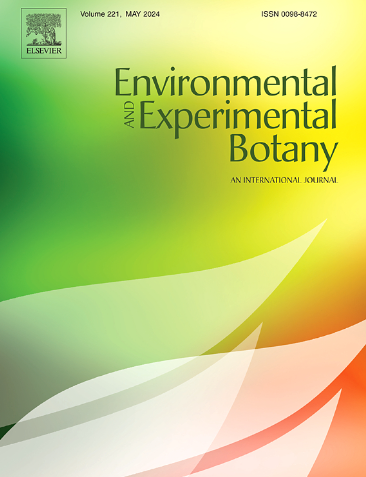Invasive species are more homogenous in their root morphology and exudate metabolome than non-invasive alien species
IF 4.5
2区 生物学
Q2 ENVIRONMENTAL SCIENCES
引用次数: 0
Abstract
- •Invasive species, known for destabilizing ecosystems, may induce biotic homogenization by reducing functional diversity compared to non-invasive species. Root traits, such as exudate production, play a significant role in belowground plant interactions. However, the differences in these traits between invasive and non-invasive alien species, as well as their potential to contribute to functional homogenization, remain insufficiently understood.
- •We investigated whether invasive species (1) exhibit distinct root morphology and exudate metabolome and show greater homogeneity than non-invasive species, and (2) how functional dissimilarity changes with increasing phylogenetic dissimilarity in invasive versus non-invasive species by analyzing root morphological traits and exudate metabolome profiles in 65 plant species with different invasion status.
- •Results showed no significant differences in root morphology or exudate metabolome composition, though certain metabolites differed between the two groups. Overall, invasive species were more homogenous in both aspects, even after controlling for their phylogenetic relationships. Non-invasive species exhibited increased functional dissimilarity with increasing phylogenetic dissimilarity in root morphology, while the opposite was observed in root exudate metabolome.
- •Our study indicates that invasive species exhibit greater functional homogeneity, leading to reduced functional diversity. This reduction leads to lower ecosystem multifunctionality and niche complementarity, potentially posing a significant threat to ecosystem functioning and soil biodiversity.
外来入侵种在根系形态和分泌物代谢组方面比非外来入侵种具有同质性
•入侵物种以破坏生态系统稳定而闻名,与非入侵物种相比,入侵物种可能通过减少功能多样性而导致生物同质化。根系性状,如分泌物的产生,在地下植物相互作用中起着重要作用。然而,这些特征在入侵和非入侵外来物种之间的差异,以及它们对功能同质化的潜在贡献,仍然没有得到充分的了解。•我们通过分析65种不同入侵状态的植物的根系形态特征和分泌物代谢组特征,研究了入侵物种是否(1)表现出不同的根系形态和分泌物代谢组特征,并表现出比非入侵物种更大的同质性;(2)入侵物种与非入侵物种的功能差异如何随着系统发育差异的增加而变化。•结果显示,尽管两组之间的某些代谢物存在差异,但根形态或渗出物代谢组组成没有显著差异。总体而言,即使在控制了它们的系统发育关系之后,入侵物种在这两个方面的同质性更强。非入侵种根系形态的系统发育差异越大,其功能差异越大,而根系分泌物代谢组则相反。•我们的研究表明,入侵物种表现出更大的功能同质性,导致功能多样性降低。这种减少导致生态系统多功能性和生态位互补性降低,可能对生态系统功能和土壤生物多样性构成重大威胁。
本文章由计算机程序翻译,如有差异,请以英文原文为准。
求助全文
约1分钟内获得全文
求助全文
来源期刊

Environmental and Experimental Botany
环境科学-环境科学
CiteScore
9.30
自引率
5.30%
发文量
342
审稿时长
26 days
期刊介绍:
Environmental and Experimental Botany (EEB) publishes research papers on the physical, chemical, biological, molecular mechanisms and processes involved in the responses of plants to their environment.
In addition to research papers, the journal includes review articles. Submission is in agreement with the Editors-in-Chief.
The Journal also publishes special issues which are built by invited guest editors and are related to the main themes of EEB.
The areas covered by the Journal include:
(1) Responses of plants to heavy metals and pollutants
(2) Plant/water interactions (salinity, drought, flooding)
(3) Responses of plants to radiations ranging from UV-B to infrared
(4) Plant/atmosphere relations (ozone, CO2 , temperature)
(5) Global change impacts on plant ecophysiology
(6) Biotic interactions involving environmental factors.
 求助内容:
求助内容: 应助结果提醒方式:
应助结果提醒方式:


